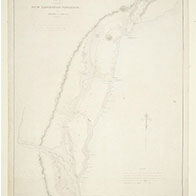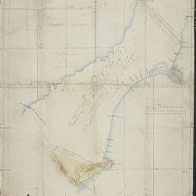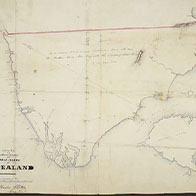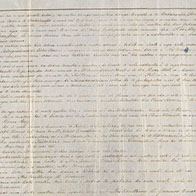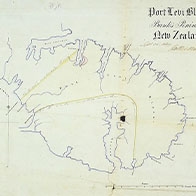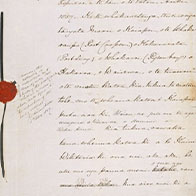History
Early Days
Waitaha were the first people of Te Waipounamu, journeying here aboard the Uruao waka. They were followed by the migrations of Ngāti Māmoe and finally Ngāi Tahu. By the mid-18th century, through warfare, intermarriage, and political alliances, a common allegiance was formed.
The traditions and histories of Waitaha, Māmoe, and Tahu were woven into a single world view, uniting Ngāi Tahu as mana whenua, the tribal authority, from Te Parinui o Whiti across to Kahurangi Point on Te Tai o Poutini.
Ngāi Tahu had its first contact with European sealers and whalers from around 1795. By the 1830s, Ngāi Tahu had built up a thriving industry supplying whaling ships with provisions such as pigs, potatoes, and wheat. In 1835 whaling and sealing stations began to be established onshore under the authority of local rakatira.
Many Ngāi Tahu women married whalers, and by the time the Treaty of Waitangi was signed in 1840, Ngāi Tahu was no stranger to European ways. Ngāi Tahu rangatira signed the Treaty at Ōnuku, Ōtākou, and Ruapuke Island. At the time, it was seen as a convenient arrangement between equals.
Ngāi Tahu Land Purchase Agreements
Between 1844 and 1864, Ngāi Tahu signed land sale contracts with the Crown for some 34.5 million acres, which amounts to approximately 80 per cent of Te Waipounamu.
The iwi believed that one-tenth of each purchase would be reserved for the Ngāi Tahu vendors, thereby guaranteeing a stake in the increasing capitalisation of the country. However, the Crown did not allocate one-tenth of the land to Ngāi Tahu, nor did they pay a fair price. They also failed to honour promises to ensure the iwi still had access to mahinga kai, and to build schools and hospitals.

Ngāi Tahu Petitions
In 1849 the Ngāi Tahu rangatira Matiaha Tiramōrehu made the first formal statement of Ngāi Tahu grievances about the land purchases.
His letter to Lieutenant Governor Edward Eyre urged the Crown to set aside adequate reserves of land for the iwi as agreed to under the terms of its land purchases. In 1857 Tiramorehu, with the support of all of the leading Ngāi Tahu rangatira at the time, sent a second letter to Queen Victoria.
Ngaitahu Census Committees
Under the Native Land Amendment and Native Land Claims Adjustment Act of 1923, the Native Land Court was empowered to ascertain and determine who the Ngāi Tahu persons are entitled to participate in any relief that may be granted in respect of Kemp's Deed.
The 1925 Ngaitahu Census Committee
In 1925 the Native Land Court established a Ngaitahu Claim Committee to work with the Court to identify the Ngāi Tahu beneficiaries who would benefit from the £354,000 recommended by the 1921 Native Land Claims Commission.
Two committees were established; the 'Taiaroa Committee' and the 'Pitama (or local) Committee.'. The Taiaroa Committee, held the view that beneficiaries qualified purely on ancestral rights, whereas the Pitama Committee, believed that only those descended from kaumātua living within the boundaries of the 1848 Kemp's Deed area at the time of purchase, qualified for compensation. The Native Land Court sat at Kaiapoi to settle the issue. The sitting at Tuahiwi was followed by a two-month long wānanga for the purpose of determining who had rights based on whakapapa.

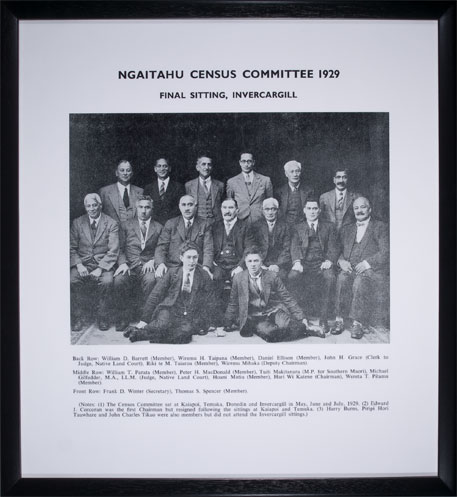
The 1929 Ngaitahu Census Committee
The Native Land Court established a second Ngaitahu Census Committee in 1929 to review the 1925 Ngāi Tahu beneficiary list. The committee sat at Kaiapoi, Temuka, Dunedin, and Invercargill in May, June, and July of 1929. The Census Committee recommended to the Native Land Court that the original 1925 Ngāi Tahu beneficiary list be amended to include more kaumātua of 1848.
In 1966 the Ngaitahu Maori Trust Board petitioned the Maori Affairs Committee for the work of the 1929 Ngaitahu Census Committee to be legally recognised. This was achieved through the enactment of the 1966 Maori Purposes Act. In the following year the Trust Board published this modified list as “Ngāi Tahu Kaumatua Alive in 1848 as established by the Maori Land Court in 1925, and the Ngaitahu Census Committee in 1929”. This list is commonly known as “the Blue Book”, and is still used to determine eligibility to register with Ngāi Tahu today.
Ngaitahu Māori Trust Board
Ngaitahu Trust Board
The first Ngaitahu Trust Board was initially established under the 1928 Native Land Amendment and Native Land Claims Adjustment Act. The Trust Board was set up as a body corporate to administer all funds held by it for the benefit of the Ngaitahu tribe or their descendants, and was charged with continuing negotiations for settlement of the Claim, including discussion of the form any future grant would take. The Trust Board consisted of the Member of Parliament for Southern Māori, a European member, and nine Ngāi Tahu representatives. Members were appointed by the Governor-General in Council. Although the Trust Board fell away during the 1930s, it was reconstituted under the 1946 Ngaitahu Trust Board Act to administer the £300,000 monetary compensation from the 1944 Ngaitahu Settlement Act for the general benefit of Ngāi Tahu beneficiaries. The 1955 Maori Trust Boards Act altered the designation of the Ngaitahu Trust Board to the Ngaitahu Maori Trust Board.
Ngaitahu Māori Trust Board
The Ngaitahu Māori Trust Board is an evolution of the Ngaitahu Trust Board that was established in 1928. Although the Trust Board fell away in the 1930s, it was reconstituted under the 1946 Ngaitahu Trust Board Act to administer the £300,000 monetary compensation from the 1944 Ngaitahu Settlement Act. The Māori Trust Boards Act 1955 altered the designation of the Ngaitahu Trust Board to the Ngaitahu Māori Trust Board, and for the first time allowed Trust Board members to be elected by Ngāi Tahu beneficiaries. The Trust Board consisted of seven members from the various main districts of Te Waipounamu, plus one member representing Ngāi Tahu living in the North Island. Although the Ngaitahu Māori Trust Board was constitutionally accountable to the Minister of Māori Affairs, it became a vehicle for Te Kerēme (the Ngāi Tahu Claim). The Trust Board was dissolved by the 1996 Te Rūnanga o Ngāi Tahu Act.
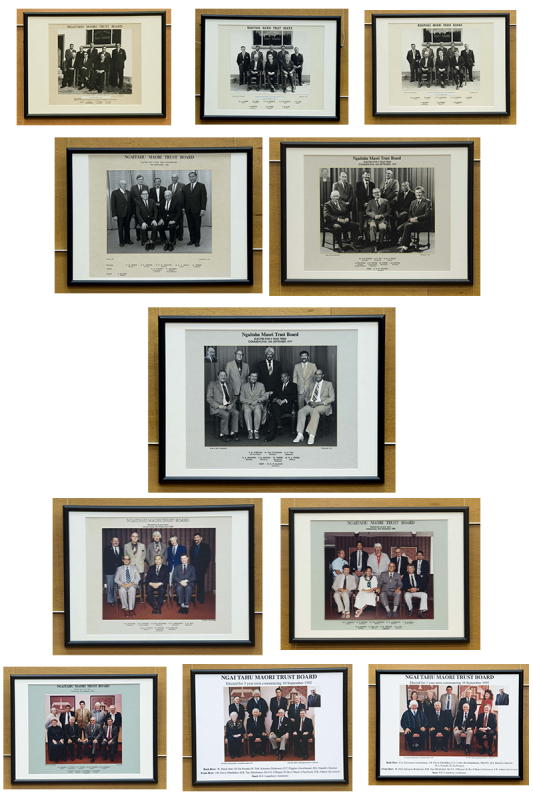
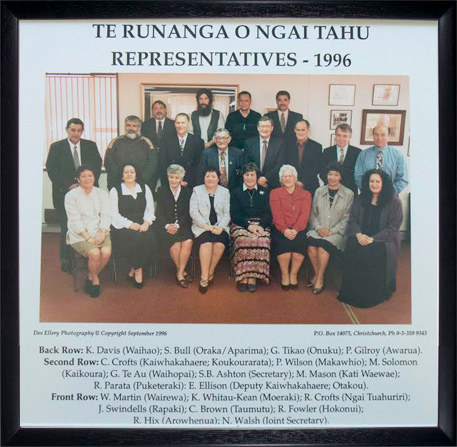
Te Rūnanga o Ngāi Tahu
Te Rūnanga o Ngāi Tahu (Te Rūnanga) was created under the Te Rūnanga o Ngāi Tahu Act 1996 as the tribal servant, protecting and advancing the collective interests of the iwi. The Charter under which it operates is a contract between Te Rūnanga and the members (Papatipu Rūnanga), and prescribes the obligations and operation of Te Rūnanga. Under the terms of the Charter, assets must be managed separately from the bodies that spend and distribute the income earned from those assets. As such, the executive functions of Te Rūnanga are carried out by the Office of Te Rūnanga which manages the representational activities, protects the rights of Ngāi Tahu whānui, and delivers social and cultural programmes. Te Rūnanga is the sole Trustee of the Ngāi Tahu Charitable Trust, which in turn owns and operates Ngāi Tahu Holdings Corporation Ltd, the investment company of the Ngāi Tahu Charitable Trust, and its subsidiary companies and related trusts.
